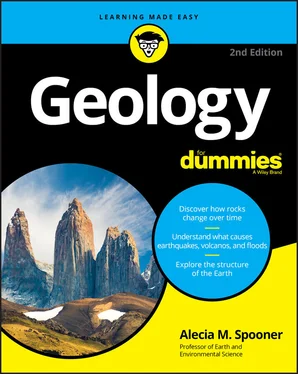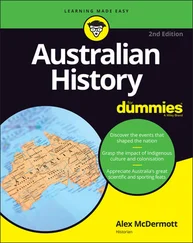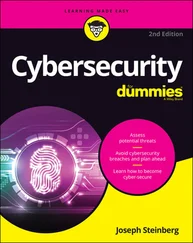7 Chapter 8FIGURE 8-1: The continents today.FIGURE 8-2: South America and Africa connected.FIGURE 8-3: Distribution of fossil evidence on Gondwana continents.FIGURE 8-4: Stratigraphic sequences of rock from continents, suggesting they we...FIGURE 8-5: Reconstruction of the continents together, based on glacial striati...FIGURE 8-6: The continents forming Laurasia.FIGURE 8-7: The relative age of oceanic crust along the seafloor of the Atlanti...
8 Chapter 9FIGURE 9-1: The equilibrium line for continental and oceanic crust.FIGURE 9-2: Characteristics of a mid-ocean ridge and rift valley.FIGURE 9-3: A region of active rifting around the Arabian Peninsula and Africa.FIGURE 9-4: A continental-oceanic plate convergent boundary subduction zone and...FIGURE 9-5: An oceanic-oceanic convergent plate boundary and associated geologi...FIGURE 9-6: A continental-continental plate convergent boundary and associated ...FIGURE 9-7: Features of a transform boundary.FIGURE 9-8: Fracture zone transform faulting across a mid-ocean divergent bound...FIGURE 9-9: Three types of rock stress.FIGURE 9-10: Anticline and syncline features.FIGURE 9-11: Dome and basin features.FIGURE 9-12: Features of a fault.FIGURE 9-13: Dip-slip faults.FIGURE 9-14: Accretion of volcanic islands onto continental crust.
9 Chapter 10FIGURE 10-1: A cross-section of the earth illustrating the focus of each model ...FIGURE 10-2: A cross-section view of how a volcanic island arc is created.FIGURE 10-3: A cross-section view of how a continental margin arc is created.FIGURE 10-4: The Pacific Plate moving across a volcanic hot spot created (and c...FIGURE 10-5: A seismometer.FIGURE 10-6: A seismogram of S and P waves.
10 Chapter 11FIGURE 11-1: In (a), the friction overcomes the pull of gravity, so everything ...FIGURE 11-2: Sediments of different grain size have different angles of repose.FIGURE 11-3: Stream erosion, undercutting the angle of repose, leads to mass wa...FIGURE 11-4: Rock falls occur when materials fall through the air from a steep ...FIGURE 11-5: A slide of intact rock material and a slump leaving a scarp.FIGURE 11-6: As soil creep occurs, objects in the soil begin to tilt downhill.
11 Chapter 12FIGURE 12-1: Earth’s hydrologic cycle.FIGURE 12-2: A watershed.FIGURE 12-3: (a) Laminar flow; (b) turbulent flow.FIGURE 12-4: (a) Dendritic drainage; (b) rectilinear drainage; (c) radial drain...FIGURE 12-5: A braided stream channel.FIGURE 12-6: A meandering stream channel that creates an oxbow lake.FIGURE 12-7: Beneath the surface as water infiltrates sediment and rock layers.FIGURE 12-8: Springs often occur on hillsides, where groundwater flows out onto...FIGURE 12-9: Groundwater heated by magma rises to the surface as a geyser.
12 Chapter 13FIGURE 13-1: Glacier zones of accumulation and ablation.FIGURE 13-2: Landscape features of alpine glacial erosion.FIGURE 13-3: How ice sheet flow creates a roche moutonnée.FIGURE 13-4: Different types of glacial moraines.FIGURE 13-5: Features of glacial deposition.FIGURE 13-6: Milankovitch cycles of (a) eccentricity, (b) obliquity, and (c) pr...
13 Chapter 14FIGURE 14-1: Creep, bed load, and suspended load layers in a wind current.FIGURE 14-2: Creation of a ventifact by abrasion.FIGURE 14-3: A typical sand dune.FIGURE 14-4: Creation of bedding on the dune slip face and the appearance of cr...FIGURE 14-5: Dune types.FIGURE 14-6: Desert pavement created by wind erosion.FIGURE 14-7: The formation of desert pavement through deposition.
14 Chapter 15FIGURE 15-1: Parts of a wave.FIGURE 15-2: Oscillatory wave motion.FIGURE 15-3: Transition of waves from oscillatory to translatory motion in shal...FIGURE 15-4: The pull of the moon creates a bulge, resulting in tides.FIGURE 15-5: Generating a longshore current.FIGURE 15-6: Motion of a rip current.FIGURE 15-7: Coastal features of erosion.FIGURE 15-8: Features of coastal deposition.
15 Chapter 16FIGURE 16-1: How an angular unconformity is created.FIGURE 16-2: How a disconformity is created.FIGURE 16-3: The Grand Canyon exhibits a nonconformity (1), an angular unconfor...FIGURE 16-4: Alpha decay of a radioactive isotope.FIGURE 16-5: Beta decay of an isotope.FIGURE 16-6: Beta capture of an isotope.FIGURE 16-7: The geologic timescale.
16 Chapter 17FIGURE 17-1: Trace fossils include tracks and burrows.FIGURE 17-2: Two styles of cladograms, or phylogenetic trees.
17 Chapter 18FIGURE 18-1: Cratons of the modern continents.FIGURE 18-2: A prokaryotic cell and a eukaryotic cell.FIGURE 18-3: The biological process of photosynthesis.FIGURE 18-4: Formation of a stromatolite as algae strands trap sediments.
18 Chapter 19FIGURE 19-1: A trilobite.FIGURE 19-2: Changes in ammonoid shell sutures through time.FIGURE 19-3: A straight-shelled nautiloid from the Paleozoic.FIGURE 19-4: A eurypterid.FIGURE 19-5: An ostracoderm, the earliest fish.FIGURE 19-6: Armored head bones of a Dunkleosteus.FIGURE 19-7: Plants common in the Carboniferous coal swamps of the Paleozoic: L...FIGURE 19-8: The pattern of sedimentary rock formation in the ocean.FIGURE 19-9: Rock types indicating a marine transgression.FIGURE 19-10: Rock types indicating a marine regression.
19 Chapter 20FIGURE 20-1: The arrangement of modern continents when they formed Pangaea.FIGURE 20-2: North America during the Mesozoic era.FIGURE 20-3: Planktonic foraminifera.FIGURE 20-4: The reptile family tree.FIGURE 20-5: A flying reptile of the Mesozoic, the pteranodon.FIGURE 20-6: Bird- and lizard-like hip structure of dinosaurs.FIGURE 20-7: Ornithischian dinosaurs.FIGURE 20-8: Saurischian dinosaurs.
20 Chapter 21FIGURE 21-1: The Alpine-Himalayan orogenic belt.FIGURE 21-2: The Circum-Pacific belt, called the Ring of Fire.FIGURE 21-3: Geographic features of North America formed during the Cenozoic.FIGURE 21-4: A Uintatherium mammal from the Eocene epoch.FIGURE 21-6: Mammoth and mastodon teeth.FIGURE 21-5: A Moeritherium.FIGURE 21-7: Stages in whale evolution from land-dwelling to fully aquatic mari...
21 Chapter 22FIGURE 22-1: Regions of the modern continents covered in flood basalt rock laye...FIGURE 22-2: Extinction rates for five major extinction events.FIGURE 22-3: The location of the Chicxulub crater in the Gulf of Mexico.
1 Cover
2 Table of Contents
3 Begin Reading
1 i
2 ii
3 1
4 2
5 3
6 5
7 6
8 7
9 8
10 9
11 10
12 11
13 12
14 13
15 14
16 15
17 16
18 17
19 18
20 19
21 20
22 21
23 22
24 23
25 24
26 25
27 27
28 28
29 29
30 30
31 31
32 32
33 33
34 34
35 35
36 36
37 37
38 39
39 40
40 41
41 42
42 43
43 44
44 45
45 46
46 47
47 49
48 50
49 51
50 52
51 53
52 54
53 55
54 56
55 57
56 58
57 59
58 60
59 61
60 62
61 63
62 64
63 65
64 66
65 67
66 68
67 69
68 70
69 71
70 72
71 73
72 74
73 75
74 76
75 77
76 79
77 80
78 81
79 82
80 83
81 84
82 85
83 86
84 87
85 88
86 89
87 90
88 91
89 92
90 93
91 94
92 95
93 96
94 97
95 98
96 99
97 100
98 101
99 102
100 103
101 104
102 105
103 106
104 107
105 108
106 109
107 110
108 111
109 112
110 113
111 115
112 116
113 117
114 118
115 119
116 120
117 121
118 122
119 123
120 124
121 125
122 126
123 127
124 129
125 130
126 131
Читать дальше












